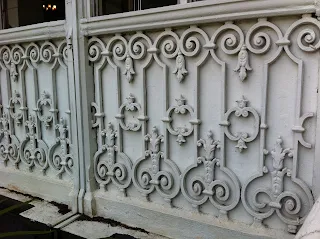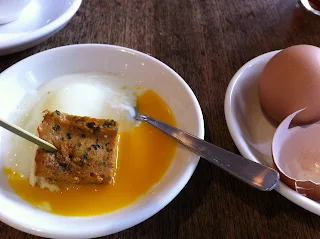
Mangosteens hailed originally from the Moluccas Isles and the Sunda Islands in Indonesia, but can be easily available now in the rest of south-east Asia, usually as whole fruits at retail. The fun commences with hand opening the rather hard outer skin layer to get at its inner fruit, and the pleasure is in the milky white , juicy and somewhat fibrous fruit. I was told that Queen Elizabeth II graciously receives gifts of such crated fruits at Buckingham Palace each year.
Europeans generally baulk at the thorny, football sized, green coloured durian, but in contrast, they love the mangosteen. Queen Victoria reputedly offered a hundred pound reward in the 19th century to anyone who could deliver to her the fresh fruit of the mangosteen. The mangosteen tree can be tall and reach anywhere from seven to 25 metres. In Australia, it is now grown on a commercial basis in Queensland and the Northern Territory.
The purple coloured fruit has an outer skin layer that discourages infestation by insects, fungi or plant viruses whilst it is ripening. The top of the fruit has a clover like arrangement in light green where attached to a stem. This is my favourite tropical fruit, but I am always careful when taking in the juice of the luscious white inner fruit - their stains have to be washed immediately from fabric or clothes, as they are rather strong and sticky. What is the best way of manually opening a mangosteen? I hold the single fruit with both hands, and gently apply pressure from the sides, so as to buckle the outer purple coloured layer. Once this layer cracks up, I see the target - the moist, ripened white segments, slightly aromatic, definitely delicious.
































